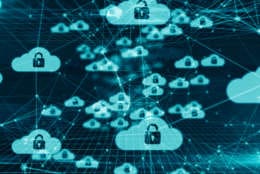Roundtables
-
“The government doesn’t have a monopoly on threat intelligence in this space.” That’s what Tonya Uggoretz, the director of the cyber threat intelligence integration center, said quite profoundly back in April.
September 04, 2018 -
The Internet of Things is changing the computing landscape across the government. From mobile and wearable devices to smart sensors in buildings to drones sending back a volume and veracity of data like never before.
July 24, 2018 -
Participants in a recent Federal News Radio panel discussion explored how the threat environment is changing and how federal agencies are tying together data from what’s going on with strategies for stopping threats before they turn into damage or pilfered data.
July 20, 2018 -
Over the last eight years since the cloud-first policy, one thing has become clear success in moving to the cloud depends mainly understanding what applications you have today and rationalizing them for the future.
July 11, 2018 -
In modernizing the IT systems that support these and a myriad of other processes, agencies are trying to introduce a new a new level of automation that incorporates data analysis, improved business processes, and greater cybersecurity and privacy controls.
June 05, 2018 -
What can agencies do to move beyond the “post and pray” approach and develop strategies that are proactive, strategic and data driven?
May 30, 2018 -
The adoption of a hybrid cloud model leads agencies down the path of creating an approach to security that is based on the zero trust model, where identity management helps define who has access and how that access is defined to specific data and applications.
May 15, 2018 -
Cloud is transforming the workplace by letting us view the concept of work in a much different manner. The tools have become smaller from smartphones to tablets, and software is running our lives. Some estimate that by 2020, 25 percent of all software will be in the cloud as-a-service.
May 08, 2018 -
Given the edgeless nature of modern networks, and the need to limit trust and access of both external and internal users, more and more IT leaders are recognizing the need to replace yesterday's authentication and access.
April 24, 2018 -
To have high assurance of successful cloud implementations, agencies must constantly re-evaluate their security foundations.
April 20, 2018 -
This program will provide a progress report on data center optimization in government.
April 17, 2018 -
Federal program managers and CIO staffs are increasingly turning to big data and data analytics to assess performance, improve service, and ferret out wastes, fraud and abuse. Besides the data generated by their own systems…
April 05, 2018 -
The focus on supply chain risks has been receiving a lot of attention lately.
March 12, 2018 -
This program will provide a progress report on IoT in government.
February 27, 2018 -
The growing number of threats to even the most secure systems shines the light on the need for a larger cyber talent pool that understands emerging technology.
February 16, 2018















